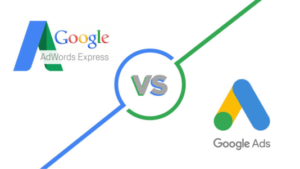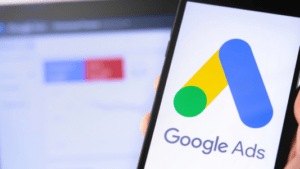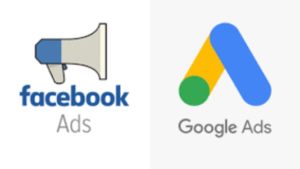Google Ads is a powerful digital advertising platform that enables businesses, including SaaS (Software as a Service) companies, to reach their target audience and drive user acquisition. With its wide reach and advanced targeting capabilities, Google Ads can help SaaS companies generate leads, increase conversions, and grow their customer base. In this article, we will explore effective user acquisition strategies for SaaS companies using Google Ads, along with real-world examples to illustrate their implementation.
Table of Contents:
Understanding the SaaS Business Model
Setting Up a Successful Google Ads Campaign
- Defining Campaign Objectives
- Identifying Target Audience
- Selecting the Right Keywords
- Crafting Compelling Ad Copy
- Setting Up Conversion Tracking
- Designing Effective Landing Pages
- Implementing Conversion Rate Optimization Techniques
- User Acquisition Strategies with Google Ads
- Search Network Advertising
- Display Network Advertising
- Remarketing Campaigns
- YouTube Advertising
- App Install Campaigns
- Google Shopping for SaaS Products
- Local Campaigns for Targeted Markets
Examples of Successful Google Ads User Acquisition Campaigns
- Example 1: SaaS CRM Platform
- Example 2: Project Management Software
- Example 3: Email Marketing Tool
- Example 4: Collaboration Software
- Example 5: Customer Support Software
Measuring and Optimizing Campaign Performance
- Key Performance Indicators (KPIs)
- Conversion Tracking and Attribution
- A/B Testing and Experimentation
- Optimization Techniques
Budgeting and Cost Management
- Setting Advertising Budgets
- Cost Control Strategies
- Scaling Successful Campaigns
Adapting to Industry Trends and Innovations
- Voice Search and Smart Speakers
- Responsive Search Ads
- AI and Machine Learning in Google Ads
- Dynamic Remarketing
Section 1: Understanding the SaaS Business Model
The SaaS (Software as a Service) business model has gained immense popularity in recent years. Unlike traditional software models where customers purchase a product upfront, SaaS companies provide software applications through a subscription-based model. Customers can access the software through the internet, eliminating the need for installation and maintenance.
SaaS companies face unique user acquisition challenges. As they operate in a competitive landscape, it is crucial to implement effective marketing strategies to attract and retain customers. User acquisition for SaaS companies involves acquiring new customers, driving sign-ups, and increasing the user base to generate recurring revenue.
Section 2: Setting Up a Successful Google Ads Campaign
- Defining Campaign Objectives:
Before setting up a Google Ads campaign, it is essential to define clear objectives. These objectives could include increasing website traffic, generating leads, driving trial sign-ups, or boosting sales. Objectives should be specific, measurable, achievable, relevant, and time-bound (SMART) to guide campaign planning and optimization.
- Identifying Target Audience:
Conducting thorough market research and competitor analysis helps SaaS companies understand their target audience. By identifying key demographics, interests, and pain points, they can create buyer personas that reflect their ideal customers. These personas guide the selection of keywords, ad messaging, and targeting options.
- Selecting the Right Keywords:
Keyword research is vital for a successful Google Ads campaign. SaaS companies should use keyword research tools to identify relevant keywords with high search volume and low competition. They can choose a mix of broad, exact, and phrase match keywords to optimize ad visibility and target specific user intents. Effective bidding strategies, such as manual bidding or automated bidding, should be employed to maximize results.
- Crafting Compelling Ad Copy:
To capture the attention of potential customers, SaaS companies must create compelling ad copy. Ad headlines should be attention-grabbing, while ad descriptions should highlight unique selling points and benefits. Including relevant ad extensions, such as sitelink extensions or callout extensions, enhances ad visibility and improves click-through rates.
- Setting Up Conversion Tracking:
Implementing conversion tracking is crucial for measuring the success of a Google Ads campaign. SaaS companies should place conversion tracking codes on key conversion actions, such as sign-ups or purchases. This allows them to track the effectiveness of their ads, keywords, and landing pages, enabling data-driven optimizations.
- Designing Effective Landing Pages:
Landing pages play a vital role in user acquisition. SaaS companies should create dedicated landing pages that align with their ad messaging and provide a seamless user experience. Best practices include clear call-to-action (CTA) buttons, persuasive copy, compelling visuals, and mobile responsiveness. Regular A/B testing and optimization can further improve conversion rates.
- Implementing Conversion Rate Optimization Techniques:
Conversion rate optimization (CRO) focuses on improving the percentage of visitors who convert into customers. SaaS companies can employ various CRO techniques, such as simplifying the sign-up process, reducing form fields, implementing trust signals, and using social proof. Continual testing and analysis of user behavior help optimize conversion rates and drive user acquisition.
Section 3: User Acquisition Strategies with Google Ads
- Search Network Advertising:
Search network advertising allows SaaS companies to display text ads within Google search results. By selecting relevant keywords and creating compelling ad copy, they can target users actively searching for solutions. Optimizing ad relevance, utilizing ad extensions, and monitoring ad rank factors, such as quality score and bid adjustments, are crucial for search network success.
- Display Network Advertising:
The Google Display Network (GDN) offers vast reach by displaying image and text ads across a network of websites, apps, and videos. SaaS companies can leverage this network to reach a broader audience and build brand awareness. Effective targeting options, such as demographics, interests, or contextual targeting, should be utilized to ensure ads are displayed to the right audience.
- Remarketing Campaigns:
Remarketing allows SaaS companies to reconnect with users who have previously visited their website but did not convert. By targeting these users with personalized ads, such as offering discounts or highlighting unique features, SaaS companies can increase conversion rates. Implementing dynamic remarketing, which displays tailored ads based on user behavior, further enhances engagement and user acquisition.
- YouTube Advertising:
YouTube advertising presents an opportunity to showcase SaaS products through video ads. SaaS companies can create engaging video content, such as tutorials, testimonials, or product demos, to capture audience attention. Targeting options, like demographics, interests, or remarketing, ensure ads reach the right viewers. TrueView ads, bumper ads, or YouTube Masthead ads are effective formats for user acquisition.
- App Install Campaigns:
For SaaS companies with mobile applications, app install campaigns on the Google Ads platform are essential for user acquisition. These campaigns drive app installs and engagement through targeted ads across various placements, including the Google Search Network, Google Display Network, and YouTube. Utilizing compelling ad creatives, optimizing app store listings, and leveraging deep linking enhance app install conversions.
- Google Shopping for SaaS Products:
If SaaS companies offer physical products or merchandise, Google Shopping campaigns can be effective for user acquisition. These campaigns display product listings with images, prices, and ratings on Google search results and the Google Shopping tab. Optimizing product feed data, using high-quality images, and monitoring product performance maximize visibility and conversions.
- Local Campaigns for Targeted Markets:
For SaaS companies targeting specific geographic regions, local campaigns can help drive user acquisition in those markets. These campaigns utilize location targeting and various ad formats to reach users in specific locations. Local search ads, promoted pins on Google Maps, or in-store promotions through Smart campaigns enable targeted advertising and increased local user acquisition.
Section 4: Examples of Successful Google Ads User Acquisition Campaigns
- Example 1: SaaS CRM Platform:
A SaaS CRM platform launches a Google Ads campaign with the objective of generating trial sign-ups. They conduct thorough keyword research, identifying relevant keywords like “CRM software trial” and “sales management tool.” Their ad copy highlights features like lead tracking, email integration, and advanced reporting. By implementing conversion tracking and optimizing their landing page with a simple sign-up form and testimonials, they drive a significant increase in trial sign-ups.
- Example 2: Project Management Software:
A project management software company aims to increase sales through Google Ads. They leverage search network advertising with keywords like “project management tool” and “team collaboration software.” Their ad copy focuses on features like task management, Gantt charts, and file sharing. By utilizing remarketing campaigns to target users who visited their pricing page, they achieve a higher conversion rate and drive sales growth.
- Example 3: Email Marketing Tool:
An email marketing SaaS company utilizes YouTube advertising to increase brand awareness and user acquisition. They create engaging video ads showcasing the ease of use, automation features, and increased ROI of their platform. By targeting users interested in email marketing or related topics, they drive traffic to their website and increase sign-ups through the video ad’s CTAs.
- Example 4: Collaboration Software:
A collaboration software SaaS company leverages the Google Display Network to expand its reach and user acquisition. They design visually appealing display ads featuring collaborative workspaces, team communication, and document sharing. By targeting relevant websites and using contextual targeting, they attract users interested in remote work, project management, and team collaboration.
- Example 5: Customer Support Software:
A customer support software company uses Google Shopping campaigns to acquire new customers. They optimize their product feed data, including high-quality images, detailed descriptions, and positive customer reviews. By targeting keywords like “helpdesk software” or “customer support tool” and utilizing bidding strategies to maximize visibility, they drive traffic to their website and increase conversions.
Section 5: Measuring and Optimizing Campaign Performance
- Key Performance Indicators (KPIs):
SaaS companies should track relevant KPIs, such as click-through rate (CTR), conversion rate, cost per acquisition (CPA), and return on ad spend (ROAS). These metrics provide insights into campaign performance and guide optimization efforts.
- Conversion Tracking and Attribution:
Implementing proper conversion tracking allows SaaS companies to attribute conversions accurately to specific ads, keywords, or campaigns. Understanding the customer journey and applying attribution models, such as first-click, last-click, or linear, helps optimize budgets and bids for maximum user acquisition.
- A/B Testing and Experimentation:
A/B testing involves creating multiple variations of ads, landing pages, or targeting options to identify the most effective strategies. By experimenting with different elements, SaaS companies can optimize campaigns based on data-driven insights and improve user acquisition performance.
- Optimization Techniques:
Regular campaign optimization is essential for improving user acquisition. Techniques include bid adjustments based on performance, adding negative keywords to refine targeting, optimizing ad scheduling for peak times, and leveraging ad extensions to enhance ad visibility. Continuous monitoring and analysis enable ongoing optimization efforts.
Section 6: Budgeting and Cost Management
- Setting Advertising Budgets:
SaaS companies should allocate appropriate budgets for their Google Ads campaigns based on their objectives, target audience size, and average customer lifetime value. Budgets can be set at the campaign or account level, and they should consider factors like competition, seasonality, and desired growth rates.
- Cost Control Strategies:
Implementing cost control strategies ensures efficient spending and maximizes return on investment (ROI). These strategies include setting bid limits, using ad scheduling to focus on high-converting periods, optimizing bids based on performance data, and employing bid automation tools when appropriate.
- Scaling Successful Campaigns:
Once successful user acquisition campaigns are identified, SaaS companies can scale their efforts to drive exponential growth. Scaling strategies may include increasing budgets, expanding targeting options, entering new markets, or leveraging automated bidding strategies. Monitoring performance closely during scaling ensures continued success.
Section 7: Adapting to Industry Trends and Innovations
- Voice Search and Smart Speakers:
As voice search and smart speakers become increasingly popular, SaaS companies should optimize their campaigns for voice search queries. This involves incorporating long-tail keywords, using conversational ad copy, and considering voice-enabled devices as a target audience.
- Responsive Search Ads:
Responsive Search Ads (RSAs) allow SaaS companies to create flexible ads that automatically adapt to match users’ search queries. By providing multiple headlines and descriptions, RSAs increase the likelihood of relevant ads being displayed, improving user acquisition potential.
- AI and Machine Learning in Google Ads:
Google Ads utilizes AI and machine learning algorithms to optimize campaigns automatically. SaaS companies can leverage these capabilities for tasks like bidding, ad rotation, or audience targeting. By embracing AI-powered features, they can streamline campaign management and drive efficient user acquisition.
- Dynamic Remarketing:
Dynamic remarketing enables SaaS companies to show personalized ads to users based on their browsing behavior and specific products they viewed. By dynamically generating ads featuring the exact products users are interested in, companies can increase engagement, click-through rates, and ultimately user acquisition.
Section 8: Conclusion
Google Ads provides a powerful platform for SaaS companies to drive user acquisition and fuel business growth. By understanding the SaaS business model, setting up effective campaigns, implementing user acquisition strategies, and optimizing performance, SaaS companies can leverage Google Ads to attract, engage, and convert their target audience. By staying informed of industry trends and embracing innovations, they can continuously refine their approach and achieve long-term success in user acquisition through Google Ads.



